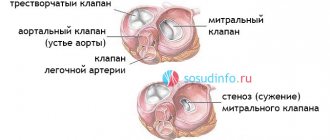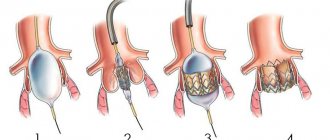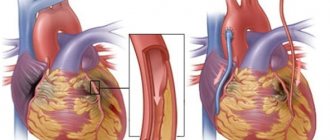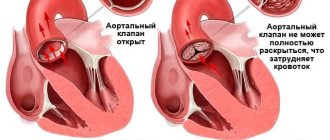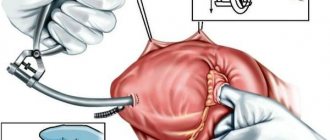Mitral valve plastic surgery is performed for pathologies of this part of the heart that cannot be cured with conservative methods. Reconstruction of the valve allows you to restore all its functions, prevent heart failure, and save the patient’s life. During the operation, plastic structures are used to completely rehabilitate the heart and avoid repeated problems with the valve. The procedure has its own characteristics, preparation and recovery rules.
Why do you need plastic surgery?
The mitral valve is the part of the heart that separates the left atrium from the left ventricle. It ensures consistent movement of blood inside the heart muscle. This part of the body may change due to congenital abnormalities or acquired pathologies. Among the acquired causes, the main ones are rheumatic heart disease, infections, and chest injuries.
Content:
- Why do you need plastic surgery?
- Indications and contraindications
- Preparing the patient
- Operation technique
- Recovery after plastic surgery
- Where are such operations performed?
- Consequences of plastic surgery
Pathologies lead to a narrowing of the valve lumen, this is called stenosis. In this case, blood circulates poorly in the heart chambers, and the right ventricle is overloaded. As a result, the patient is at risk of disability and even death.
Mitral valve insufficiency indicates insufficient closure of its walls. This leads to the fact that blood in the pulmonary artery flows poorly and is not retained. This picture also threatens the patient’s life with its consequences. If diseases are detected in the early stages, they can be treated conservatively, without surgery.
The problem is that in the first stages such pathologies are difficult to identify. The patient feels difficulty breathing and rapid fatigue, but is unaware of the problem. In the later phases of pathogenesis, the function of the mitral valve can only be restored through surgery.
Plastic surgery involves minimally invasive operations using an endoscope and abdominal surgery. The type of surgical technique is chosen depending on the clinical picture: simple problems can be solved by endoscopy, for complex situations it is necessary to open the sternum. The scope of the surgeon’s work also depends on the disease and its stage.
Most often, the operation is accompanied by the installation of a support ring or half ring. These designs are selected individually and sewn to the valve itself. Thanks to them, heart function is normalized, and the risk of re-stenosis or failure is reduced.
If it is impossible to preserve the valve leaflets during plastic surgery, prosthetics are performed. Sometimes valve motility is impaired due to secondary chordae. If they are too short or thickened, they are reconstructed in such a way as to restore the mobility of the valves. Mitral valve plastic surgery solves most of the problems in this area. Despite the complexity and responsibility of the procedure, its prognosis is positive. Most patients return to normal life without complications.
Indications and contraindications
Indications for the procedure are heart failure in combination with impaired valve function. Signs of such a problem are:
- swelling of the limbs. Most often the legs swell, but in some cases the same phenomenon occurs in the thighs, genitals, and abdomen;
- difficulty breathing. As a rule, this is shortness of breath, sometimes there may be a lack of air, pain when breathing in the chest area;
- pressing and throbbing pain in the chest;
- blue lips, gray skin color, “bruises” under the eyes;
- worsening of symptoms with physical activity.
Such signs indicate a developing disease; in the first stages, the problem may not manifest itself at all. Based on the patient’s complaints, the doctor prescribes several types of diagnostics, then clarifies the diagnosis. If a serious disorder in the mitral valve is confirmed, the type of surgical intervention is discussed.
Reconstruction of the heart is a difficult task, so it is carried out only if other methods do not help the patient. To prescribe plastic surgery, the attending doctor prescribes a series of examinations to the patient to ensure the need for such manipulations. For mild forms of the disease, drug treatment is most often used. Also, other types of therapy are sought if the patient has severe kidney and liver diseases, acute infections, pneumonia, gastric ulcers, diabetes mellitus, poor blood clotting, and sepsis.
Mitral repair is prohibited for people who have just suffered a stroke or extensive myocardial infarction.
If mitral repair is necessary, doctors weigh all the risks. Even against the background of some contraindications, surgery can be performed if it is intended to save the patient. Before prescribing this procedure, they must undergo training.
Advantages of heart valve replacement abroad
Surgical valve replacement is considered a low-traumatic operation compared to transplantation. Heart transplantation in Germany is an expensive and complex procedure, but the treatment results are worth it. The cost of heart valve transplantation is determined by the patient’s diagnosis, the level of the clinic and the type of implant.
It should also be noted that such an intervention brings patients with chronic heart failure back to life. These patients can gradually restore their physical activity and return to work that does not involve heavy physical labor.
During the preliminary consultation, specialists from the Deutsche Medizinische Union will inform the patient about the cost of treatment and rehabilitation. At the same time, the price of services will include a range of accompanying assistance and paperwork for traveling abroad.
The DMU team will compare prices for heart valve transplantation in German clinics and thereby help a person make the best choice of a cardiology center. We will also organize a final diagnosis and consultation with a specialized German cardiac surgeon.
Preparing the patient
Proper preparation is necessary for successful reconstruction. It also reduces the likelihood of complications during and after surgery. The preparatory stage is individual for each individual case. Based on the medical history, the doctor prescribes a diet for his patient and gives additional recommendations on the level of exercise and rest. In addition, you need to undergo additional research:
- consultation with a cardiac surgeon;
- blood and urine tests;
- blood chemistry;
- chest x-ray.
For a more detailed examination of the heart and its parts, the patient can undergo more modern techniques. For example, angiography shows blood circulation in every part of the body, and it accurately determines where the blood flow is impaired. Computed tomography is becoming increasingly popular among doctors as it provides more information. CT allows you to examine both blood circulation and the structure of the organ itself, and determine the entire range of problems.
For some categories of patients there are additional preparation rules:
- Those diagnosed with arrhythmia are treated to normalize their heart rhythm.
- In case of heart failure, the patient is prescribed a diet that reduces sodium content. Diuretic therapy is added to the therapeutic diet, tablets, teas, and infusions are prescribed.
- Cardiogenic shock is considered a relative contraindication for mitral valve repair. Therefore, before surgery, the patient must undergo rehabilitation.
The day of reconstruction is scheduled when the patient is completely ready. He is admitted to the hospital 1-3 days before the scheduled date in order to have time to carry out diagnostics. Eating is prohibited 6-8 hours before surgery. To reassure the patient, the doctor explains to him how this procedure is done and why it is needed.
Operation technique
Plastic surgery is performed only in a hospital setting, in an office specially equipped for the operation. If it is carried out using an endoscope, there will be monitors in the room to monitor the process. First, the patient is taken for premedication, and sedatives and hypnotics are injected into a vein. After falling asleep, the plastic surgery itself begins.
The surgeon makes an incision on the front wall of the chest, then the breast bones. They open access to the heart layer by layer. A cardiopulmonary bypass machine (ACB) is connected. This device will simulate the work of the lungs, saturating the blood with oxygen while manipulations are performed on the heart. Tubes from the blood pump are connected to the chambers of the heart; blood will flow to it, be saturated with oxygen and disperse throughout the body. Then the surgeon begins the main stage of work, it will depend on what exactly happened to the valve.
For mitral insufficiency, a so-called annuloplasty is performed. A plastic ring is placed near the valve opening to restore lumen and normal blood flow.
The sashes can be connected manually - this is suture plastic. If stenosis is diagnosed, a commissurotomy is needed. This is the manual separation of fused leaflets in a valve. Stenosis surgery is also carried out without connecting to the artificial blood pressure pump; it is performed through a small hole between the ribs on the left side. During the procedure, the patient's condition is monitored using medical equipment. Blood pressure and respiration are constantly measured. When all the work is completed, the AIK is turned off, and the surgeon sutures the opening sites layer by layer. External seams are treated with an antiseptic and a tight bandage is applied. Before taking the patient out of the operating room, his condition is checked again.
In the first days after the operation, the patient is constantly monitored by doctors. He remains in the hospital for another 5-7 days, depending on the complexity of the operation and the speed of rehabilitation. In the first 1-2 days, bed rest and diet are indicated.
Activity is gradually restored under medical supervision. Then the operated patient is discharged, prescribed medications for rehabilitation and a routine examination by a cardiologist and therapist.
Simple mitral valve disorders are resolved using minimally invasive techniques. Several small incisions are made in the chest, into one of which an endoscope, a device with a micro-camera, is placed. The surgeon performs the operation without a strip opening, so after such manipulations the patient undergoes rehabilitation faster.
Technology of surgical valve replacement
In Germany, such an operation is performed under general anesthesia. After anesthesia, the patient is connected to machines that provide ventilation and artificial circulation.
After anesthesia, the surgeon uses a scalpel to cut the skin and sternum. Next, the heart valve is replaced through an incision in the atrium. The operation ends with the installation of cardiac electrodes to temporarily stimulate myocardial contraction.
Heart valve transplantation abroad, in addition to open-heart surgery, can be performed in a minimally invasive manner. In such cases, the incision is made in the intercostal space or to the right of the sternum. Recently, in European clinics, doctors mainly use minimally invasive operating technology.
Recovery after plastic surgery
Heart surgery requires gradual rehabilitation. In the first month after plastic surgery, it is recommended to take very good care of the entire body: give up bad habits, follow the prescribed diet, and avoid stress.
During this period, you need to avoid foods that are too salty, fried, or fatty. Also, drinking plenty of water additionally puts a strain on the cardiovascular system; you should try to drink no more than 1.5 liters of water per day. Alcohol is completely excluded.
It is imperative to undergo routine examinations. The doctor will evaluate the effectiveness of the plastic surgery and the patient’s condition and adjust the treatment. If your health worsens in the postoperative period, this is a reason to call an ambulance or come to an unscheduled appointment. Physical activity should be reduced, sometimes go for leisurely walks, breathe fresh air.
In most cases, such an operation ends successfully for the patient. Over time, all functions of the heart are restored, and the person can return to an active lifestyle, which is confirmed by reviews.
After the first 4 weeks, an examination is scheduled to ensure the success of the procedure. To do this, you need to undergo an ultrasound of the heart, cardiography, urine and blood tests. In the first year after plastic surgery, the patient visits the doctor every month, then twice a year, if there are no complaints.
Results of heart valve replacement
In some cases, patients with severe heart failure require radical heart transplant surgery. Replacing valves for stenosis will help prevent such treatment, which will restore physiological blood flow. As a result, the body tissues receive a sufficient amount of oxygen and nutrients.
Immediately after surgery, the patient feels improved. Subsequently, the person must follow special medical recommendations.
Where are such operations performed?
Mitral plasty is performed only in large regional centers, in cardiology departments of clinics or specialized centers. The cost of such a service is quite high; the price for mitral valve repair depends on the range of work, the qualifications of the surgeon, the status and pricing policy of the clinic.
On average, such an operation will cost $3,500, the cost includes hospital stay, diagnostics, and surgery. Reconstruction services are also offered by clinics in Europe, where such a service will cost an average of 45,000 euros.
Best materials of the month
- Coronaviruses: SARS-CoV-2 (COVID-19)
- Antibiotics for the prevention and treatment of COVID-19: how effective are they?
- The most common "office" diseases
- Does vodka kill coronavirus?
- How to stay alive on our roads?

